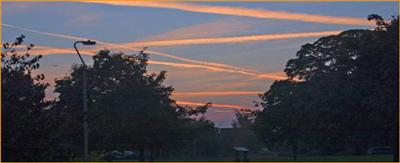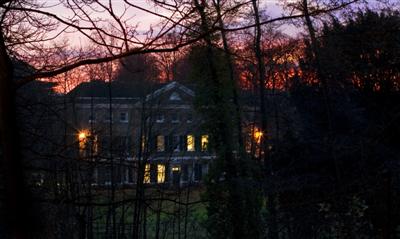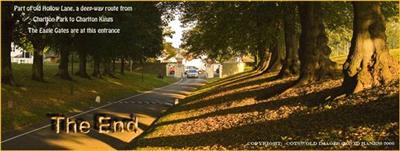Conservation - of the Park and the Planet
Only since 1950 has the former mansion (at the heart of St Edward's School) been afforded statutory protection as a Grade II listed building. The park's two metre high dry-stone boundary wall, from the bridge on Moorend Road to Chancel Way on Cirencester Road, the Eagle Gates and the Ice-House are all similarly listed. Although much of Charlton Park has now been been built over, the oft-ignored lessons of history suggest we should never assume any remaining open spaces are inviolate to future schemes and schemers. Urban 'garden-grabbing' methods of recent times could be followed by similar plans directed towards surviving grass and woodland in the future. In today's acceptably well-developed Charlton Park we are fortunate that we still enjoy the greatest quantity of green space per 1000 population, (16.24 hectares - Cheltenham Green Space Audit - 2007) which is greater than the Cheltenham average level and something we should strive to maintain, for the sake of our own health and that of others around us. We currently vent unacceptable amounts of CO² and other pollutants into our atmosphere, making it incumbent on all of us to reduce our carbon footprint by nurturing the few oxygenating patches of natural photosynthesis that survive around us.
In the introduction, I referred to the e-book as being 'virtually-free' which is only partly true. We now know that almost everything we do on planet Earth leaves a carbon footprint and it has been estimated that simply keying-in a couple of Google™ internet searches generates about the same amount of carbon dioxide as boiling a kettle. A typical query through the search engine is said to generate about 7g of CO² and boiling a kettle about 15g of CO². These emissions are caused by the electricity required to power your computer and send a request to networked servers around the world. According to Gartner, an American research firm, the IT industry now causes about two per cent of all global carbon dioxide emissions, exceeding the impact of the aviation industry, who daily create contrails in the sky above Charlton Park, as seen below. There is probably a moral here somewhere, and if you do no more than forego the occasional cup of tea whilst browsing the web, you will have done your own bit to try and redress this fragile balance.
 King William Drive witnesses another sunrise through some newer trees on the Green
King William Drive witnesses another sunrise through some newer trees on the Green
 Another sunset, the age-old silhouette of trees, a less than clean but highly-atmospheric sky
Another sunset, the age-old silhouette of trees, a less than clean but highly-atmospheric sky
Whatever happens in future the author believes that the true 'Kings' of this beautiful old park will always be its majestic Cedars and Wellingtonias, and long may they and little else reign over us - with the possible exception of the Gloucestershire gentleman already referred to. Until then, there is nothing to stop us liaising with our local Tree Preservation Officers and planting out a few more noble specimens - maybe a cedar or giant sequoia on the Green in King William Drive, from where several of their old cousins have recently departed.
 A trick of the light - at a dawn of the 21st century.The mansion appears to stand alone again, much as it was before 1935.Photo taken from the footpath/cycle track on the rim of the landscaped 'bowl'
A trick of the light - at a dawn of the 21st century.The mansion appears to stand alone again, much as it was before 1935.Photo taken from the footpath/cycle track on the rim of the landscaped 'bowl'

